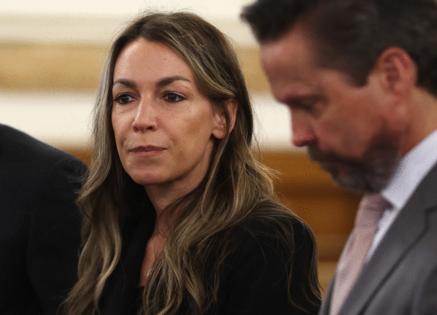Karen Read retrial jury begins deliberations
Published in News & Features
DEDHAM, Mass. — The fate of Karen Read is now in the hands of a jury who listened earlier today as attorneys presented very different versions of what happened on Jan. 29, 2022, in closing arguments that echoed their openings now more than a month and a half ago.
Back then, the prosecution said the case hinged on Read’s alleged admission to first responders at the scene: “I hit him.” The defense presented its own three-word summary of the case: “There was no collision.”
Prosecutor Hank Brennan in his closing today said that what happened was “simple.”
“Ms. Read was with Mr. O’Keefe and she got drunk. She drank. She was two to three times over the legal limit and they went to a party, an after party, and they were fighting,” Brennan said. “They were fighting, it was a relationship in decline, and he got out of the car and he had a brief window of life left. When he got out and she drove away, she couldn’t let that go. She got drunk, she hit him, she left him to die. It’s that simple.”
In contrast, defense attorney Alan Jackson reiterated that there was no collision and no simple explanation because of that. The truth, he said, was obscured in investigative rot.
“There was no collision. There was no collision. There was no collision,” Jackson began, repeating his own opening. “This case was corrupted from the start.”
He said there was ample room for reasonable doubt in this case and that Brennan had failed to overcome any of it.
“They can not and they will not ever be able to prove that John was struck by a vehicle beyond a reasonable doubt and to a moral certainty because the science does not lie, the medical evidence does not lie, the physics do not lie. Their investigation was flawed from the start because their investigator was corrupted from the start by bias, personal loyalties.”
Judge Beverly J. Cannone warned the jury ahead of their 30-minute lunch break that they would return to hear “long” instructions from her. That was the truth, as her instructions encompassing the jury’s duties, definitions, warnings about confirmation bias, definitions of the charges and their various lesser included charges and everything else sailed toward an hour-and-a-half.
“Every person who is accused of a crime is presumed to be innocent of the crime,” Cannone said. “Ms. Read is presumed innocent of the charges in this case. That means you must presume Ms. Read to be innocent unless the prosecution has proved beyond a reasonable doubt through evidence presented at this trial that Ms. Read has committed the crimes charged.”
She delivered the “‘comprehensive’ set of instruction, as opposed to a ‘concise’ set of instructions,” retired Superior Court Judge Jack Lu told the Herald, which he said is used “generally to reduce the number of questions.”
-------------
©2025 MediaNews Group, Inc. Visit at bostonherald.com. Distributed by Tribune Content Agency, LLC.







Comments